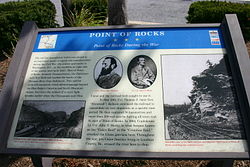
Back تفسير التراث Arabic Интерпретиране на културното и природно наследство Bulgarian Natur- und Kulturinterpretation German Ερμηνεία κληρονομιάς Greek Interpretación del patrimonio Spanish Interprétation du patrimoine French המסרה HE Mediação cultural Portuguese

Heritage interpretation refers to all the ways in which information is communicated to visitors to an educational, natural or recreational site, such as a museum, park or science centre. More specifically it is the communication of information about, or the explanation of, the nature, origin, and purpose of historical, natural, or cultural resources, objects, sites and phenomena using personal or non-personal methods. Some international authorities in museology prefer the term mediation for the same concept, following usage in other European languages.
Heritage interpretation may be performed at dedicated interpretation centres or at museums, historic sites, parks, art galleries, nature centres, zoos, aquaria, botanical gardens, nature reserves and a host of other heritage sites. Its modalities can be extremely varied and may include guided walks, talks, drama, staffed stations, displays, signs, labels, artwork, brochures, interactives, audio-guides and audio-visual media. The process of developing a structured approach to interpreting these stories, messages and information is called interpretive planning. The thematic approach to heritage interpretation advocated by University of Idaho professor Sam Ham, the National Association for Interpretation, the US National Park Service, and others, is considered best practice.[1][2][3][4][5][6][7][8][9]
Those who practice this form of interpretation may include rangers, guides, naturalists, actors (who may wear period dress and do reenactments), museum curators, natural and cultural interpretive specialists, interpretation officers, heritage communicators, docents, educators, visitor services staff, interpreters or a host of other titles. The interpretive process is often assisted by new technologies such as visualizing techniques.[10]
- ^ Brochu, Lisa (2003). Interpretive planning. Fort Collins, CO: InterpPress. ISBN 1-879931-12-5.
- ^ Brochu, Lisa; Merriman, Tim (2002). Personal Interpretation: Connecting Your Audience to Heritage Resources. Fort Collins, CO: InterpPress. ISBN 1-879931-06-0.
- ^ Caputo, Paul; Lewis, Shea; Brochu, Lisa (2008). Interpretation by Design: Graphic Design Basics for Heritage Interpreters. Fort Collins, CO: InterpPress. ISBN 978-1-879931-25-1.
- ^ Ham, Sam (1992). Environmental Interpretation: A Practical Guide for People with Big Ideas and Small Budgets. Golden, CO: Fulcrum Publishing. ISBN 1-55591-902-2.
- ^ Levy, Barbara; Lloyd, Sandra; Schreiber, Susan (2001). Great Tours! Thematic Tours and Guide Training for Historic Sites. Walnut Creek, CA: AltaMira Press. ISBN 0-7591-0099-3.
- ^ Moscardo, Gianna; Ballantyne, Roy; Hughes, Karen (2007). Designing Interpretive Signs: Principles in Practice. Golden, CO: Fulcrum Publishing. ISBN 978-1-55591-550-6.
- ^ Pastorelli, John (2003). Enriching the Experience: An Interpretive Approach to Guiding. French's Forest, Australia: Hospitality Press. ISBN 1-86250-522-5.
- ^ Regnier, Kathleen; Gross, Michael; Zimmerman, Ron (1994). The Interpreter's Guidebook: Techniques for Programs and Presentations (3rd ed.). Stevens Point, WI: UW-SP Foundation Press. ISBN 0-932310-17-6.
- ^ Ward, Carolyn; Wilkinson, Alan (2006). Conducting Meaningful Interpretation: A Field Guide for Success. Golden, CO: Fulcrum Publishing. ISBN 978-1-55591-530-8.
- ^ Sideris A., 2008. "Re-contextualized Antiquity: Interpretative VR Visualisation of Ancient Art and Architecture" Archived 2018-04-24 at the Wayback Machine in Mikropoulos T. A. and Papachristos N. M. (eds.), Proceedings: International Symposium on “Information and Communication Technologies in Cultural Heritage” October 16–18, 2008, University of Ioannina 2008, ISBN 978-960-98691-0-2, pp. 159-176.
© MMXXIII Rich X Search. We shall prevail. All rights reserved. Rich X Search